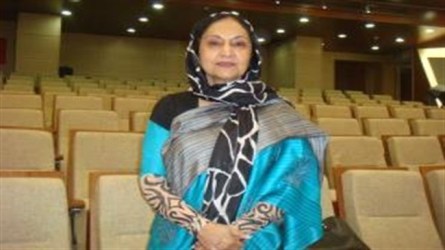
Persian became an official language in India during the Ghaznavid reign, when all political, cultural, financial and scientific texts were in Persian.
Mass emigration of Iranian poets, authors and intellectuals to India during the Gurkani Dynasty contributed to the spread of the Persian language in the country.
Persian was taught in schools and used in official correspondence and petitions in the Indian bureaucratic system.
Numerous ancient books on geology, geography, chemistry, medicine, philosophy and mysticism composed in Persian are maintained in museums of India, which bear testimony to the popularity of Persian in India.
Taj Mahal, one of the most important landmarks of India, was built to honor an Iranian lady named Beigum. Beigum, who was from Shiraz, insisted on celebrating Norouz in India.
Amir Khosrow Dehlavi and Bidel Dehlavi, are only a few of the large numbers of poets who have composed poems in Persian.
Shahnameh of Ferdowsi and Divan of Hafez were published for the first time in Kolkata in 1785 and 1791, respectively.
Many Persian-language newspapers, the most important of which was Hablolmatin, were also published in India.
Many contemporary critics and authors including Sadeq Hedayat frequently traveled to India.
Persian language was finally replaced by English in 1836 with the onset of British colonialism. There were fears that with the decline in the number of Persian language speakers in India, the language will go into extinction forever. Hence, a number of intellectuals decided to revive it.
Azarmidokht Safavi, who established a special foundation to save Persian language in India, is of Iranian origin. In 2005, she received an award from Indian president for years of endeavors to revive Persian language in the country.
Safavi, 63, traveled to Iran in May to participate in the International Congress on Hafez, which was held in Shiraz.
She said that she was determined not to let Persian language go into oblivion after serving as a vernacular for Indians for 700 years.
The Persian daily Iran interviewed Safavi to learn more about her achievements.
Excerpts of the interview, translated and published by the English-language paper Iran Daily, follow:
IRAN: Please tell us about your family.
SAFAVI: I was born in 1952 in Agra, where Taj Mahal is situated. My family can trace its ancestor back to Sheikh Safieddin Ardebili and Safavid family that dominated Iran for 200 years.
When did your forebears emigrate from Iran to India?
They left Iran for India in 1737 during the reign of Nader Shah Afshar in Iran, which coincided with the reign of Mohammad Shah Gurkani in India. Mohammad Shah was of Iranian origin being a grandchild of Teymour Gurkani.
My ancestor headed to Azimabad which is presently called Patna.
Patna was then the hub of Persian literature. My ancestor was appointed the governor of Patna by the king.
Which languages did your family speak: Persian or Hindi?
Both of them, since they had tied the knot with Indian ladies. Our ancestors were among the top researchers of their time. Navvabodoleh Shamsabadi, for example, was one of my ancestors who wrote 35 books in Persian.
My father, Mohammad Sadeq Safavi, studied Persian literature in Aligarh Muslim University in India. Many of his articles were published in newspapers including ‘Yaghma’ and ‘Sokhan’ which were then published in Iran.
He was in direct contact with Iraj Afshar, Habib Yaghmaei and Mohammad Ebrahim Bastani Parizi who were among the top authors of their time.
What was the topic of your PhD dissertation?
I wrote my doctorial thesis on ‘Sa’di: A Philanthropic Sonnet Writer’. I defended my thesis in 1975.
When did you first visit Iran?
I traveled to Iran when I was still studying at the university. I stayed here for a few months during which I tried to brush up in my Persian.
What did you do after graduating?
I was the head of the Department of Persian Language in Aligarh University for six years. Currently, I am the head of a Persian Language Research Center, which is affiliated to Aligarh.
I am a member of editorial board in Qand-e Parsi and Indo-Iranica magazines.
Do Indians know about Iran?
Literate Indians are taught history. Therefore, they know Iran and India have many cultural commonalities.
Iran and India had cultural and trade ties for 800 years and Persian was the official language of the country during the Ghaznavid Dynasty.

Add new comment